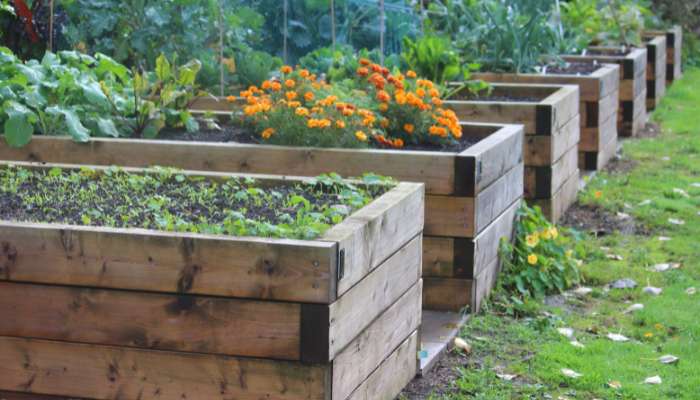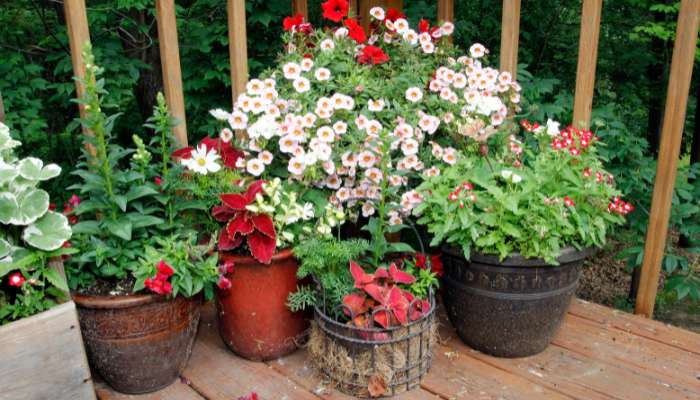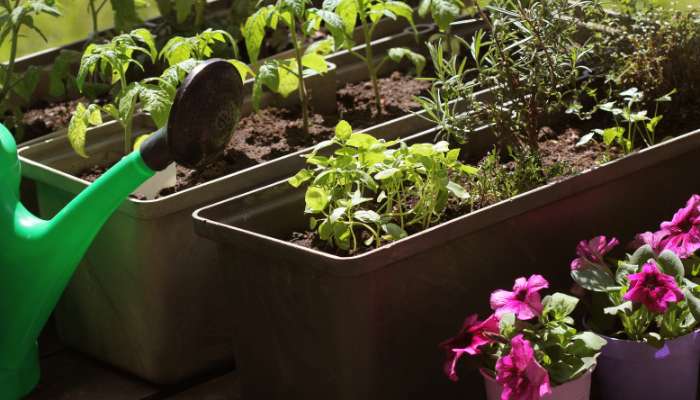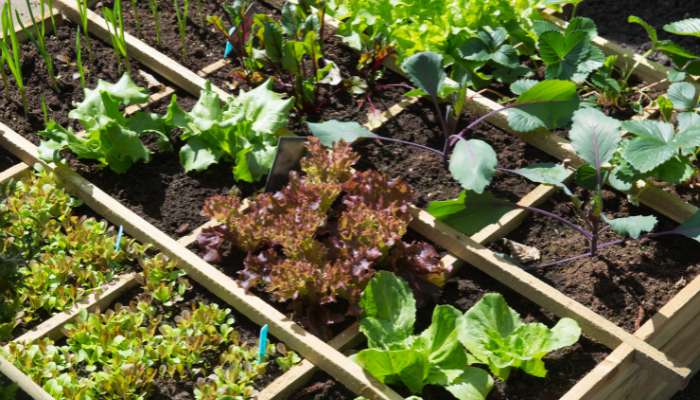If you are looking for Container Gardening Ideas this article help you.
If you dream of lush greenery but lack the sprawling garden space, container gardening might be your perfect solution. It’s a versatile and enjoyable way to cultivate plants, whether you’re in a cozy apartment or a suburban home with a limited outdoor area.
Table of Contents
Introduction to Container Gardening
Container gardening is the art of growing plants in pots, containers, or any vessel that holds soil. It offers flexibility and allows individuals to bring the beauty of nature into any setting, no matter how small.
Benefits of Container Gardening
1. Accessibility
One of the primary advantages of container gardening is accessibility. With containers, you can position your plants at the perfect height for easy care and maintenance, reducing strain on your back and knees.
2. Space Efficiency
Container gardening maximizes space utilization. Even the tiniest balconies or windowsills can be transformed into vibrant green spaces with strategically placed pots.
3. Mobility
Containers are mobile, giving you the freedom to rearrange your garden layout whenever inspiration strikes. This flexibility is particularly beneficial for renters or those who frequently change their outdoor decor.
Choosing Containers
Selecting the right containers is crucial for successful container gardening. Consider factors such as material, drainage, and size.
1. Materials
Containers come in various materials, including clay, plastic, wood, and metal. Each material has its advantages and drawbacks in terms of durability, insulation, and aesthetics.
2. Drainage
Proper drainage is essential to prevent waterlogged soil and root rot. Ensure that your containers have drainage holes at the bottom to allow excess water to escape.
3. Size
Choose containers that provide enough space for your plant’s roots to grow. A general rule of thumb is to select pots that are at least twice the diameter of the plant’s root ball.

Popular Container Gardening Ideas
Container gardening offers endless possibilities for growing a wide range of plants, from herbs and vegetables to flowers and ornamentals.
Herbs and Vegetables
Grow your culinary herbs and vegetables in containers for a convenient and bountiful harvest right at your fingertips. Popular choices include basil, tomatoes, peppers, and lettuce.
Flowers
Brighten up your outdoor space with colorful blooms in containers. Choose from annuals, perennials, or flowering shrubs to create stunning floral displays.
Succulents and Cacti
Succulents and cacti are well-suited for container gardening, thanks to their low water requirements and unique shapes and textures. Create a desert oasis on your patio or windowsill with these resilient plants.
Vertical Gardening
Maximize vertical space by incorporating trellises, hanging baskets, and vertical planters into your container garden design.
Trellises and Supports
Train vining plants like tomatoes, cucumbers, and peas to climb trellises or supports, saving valuable ground space and adding vertical interest to your garden.
Hanging Baskets
Hang baskets filled with trailing flowers or foliage to add depth and dimension to your outdoor living areas. Perfect for small balconies or porches.

Creative Container Ideas
Get creative with your container choices to add personality and style to your garden.
Recycled Materials
Repurpose old tires, buckets, or even shoes as quirky planters for a unique and eco-friendly garden display.
Tiered Planters
Stacked or tiered planters create visual interest and allow you to grow multiple plants in a small footprint. Ideal for small gardens or urban balconies.
Window Boxes
Install window boxes filled with colorful flowers or cascading vines to enhance your home’s curb appeal and bring nature closer to your living space.

Container Gardening Tips
Soil Selection
Use a high-quality potting mix specifically formulated for container gardening to ensure proper drainage and aeration for healthy plant growth.
Watering Techniques
Water container plants regularly, especially during hot weather, but be careful not to overwater. Stick your finger into the soil to check for moisture before watering.
Fertilizing
Feed your container plants regularly with a balanced fertilizer to replenish nutrients leached out by frequent watering.
Maintenance of Container Gardens
Keep your container garden looking its best with regular maintenance tasks.
Pruning and Deadheading
Remove spent flowers and prune overgrown branches to promote healthy growth and prolong flowering.
Pest and Disease Management
Monitor your plants for signs of pests or diseases and take appropriate action to prevent infestations or spread.
Seasonal Considerations
Adjust your container gardening practices to suit the changing seasons.
Winterizing
Protect cold-sensitive plants from frost by bringing them indoors or wrapping containers with insulating materials.
Summer Heat Protection
Provide shade and extra water to container plants during hot summer months to prevent wilting and heat stress.
Inspiration for Small Spaces
Even the smallest of spaces can be transformed into thriving gardens with container gardening.
Balconies
Transform your balcony into an urban oasis with containers filled with flowers, herbs, and small vegetables.
Patios
Create a cozy outdoor retreat on your patio with a mix of container plants in various sizes and shapes.
Windowsills
Brighten up your windowsills with colorful blooms or aromatic herbs, bringing nature indoors and adding charm to your home.

Container Gardening for Beginners
New to container gardening? Start with easy-to-grow plants and simple techniques.
Step-by-Step Guide to Container Gardening
Follow these steps to set up your container garden:
- Choose the Right Location: Place your containers in a location that receives adequate sunlight for your chosen plants. Most vegetables and flowering plants require at least 6-8 hours of sunlight per day.
- Prepare Containers: Fill containers with potting mix, leaving a few inches of space at the top for watering. Ensure that containers have drainage holes to prevent waterlogging.
- Plant Selection: Select plants suited to your climate, available sunlight, and container size. Consider the mature size of plants and their compatibility with other container companions.
- Planting: Gently remove plants from their nursery pots and loosen the roots before placing them in the containers. Fill in any gaps with additional potting mix and water thoroughly.
- Watering: Water container plants regularly, keeping the soil evenly moist but not waterlogged. Check soil moisture regularly, especially during hot weather, and adjust watering frequency as needed.
- Fertilizing: Feed your container plants with a balanced fertilizer according to package instructions to promote healthy growth and flowering. Avoid over-fertilizing, as it can lead to nutrient imbalances and damage to plants.
- Maintenance: Monitor your container garden for signs of pests, diseases, or nutrient deficiencies. Remove faded flowers and yellowing leaves regularly to promote new growth.
- Enjoy: Sit back, relax, and enjoy the beauty of your container garden as it grows and flourishes. Experiment with different plant combinations and arrangements to create your unique green oasis.
FAQs (Frequently Asked Questions)
1. Can I use any container for container gardening?
While you can get creative with container choices, it’s essential to ensure proper drainage and sufficient space for plant roots to grow. Avoid containers that may leach harmful chemicals into the soil.
2. How often should I water my container plants?
The frequency of watering depends on factors like plant type, container size, and environmental conditions. Check the soil moisture regularly and water when the top inch feels dry.
3. What are some low-maintenance plants suitable for container gardening?
Succulents, herbs like rosemary and thyme, and ornamental grasses are excellent choices for low-maintenance container gardens. They require minimal care and can thrive in various conditions.
4. How do I prevent pests and diseases in my container garden?
Practice good sanitation by removing debris and dead plant material regularly. Monitor your plants for signs of pests or diseases, and take prompt action to prevent infestations or spread.
5. Can I grow vegetables in containers?
Absolutely! Many vegetables, including tomatoes, peppers, lettuce, and carrots, thrive in containers. Just make sure to choose varieties suitable for container growing and provide adequate sunlight, water, and nutrients.

















4 thoughts on “Best Guide Container Gardening Ideas”